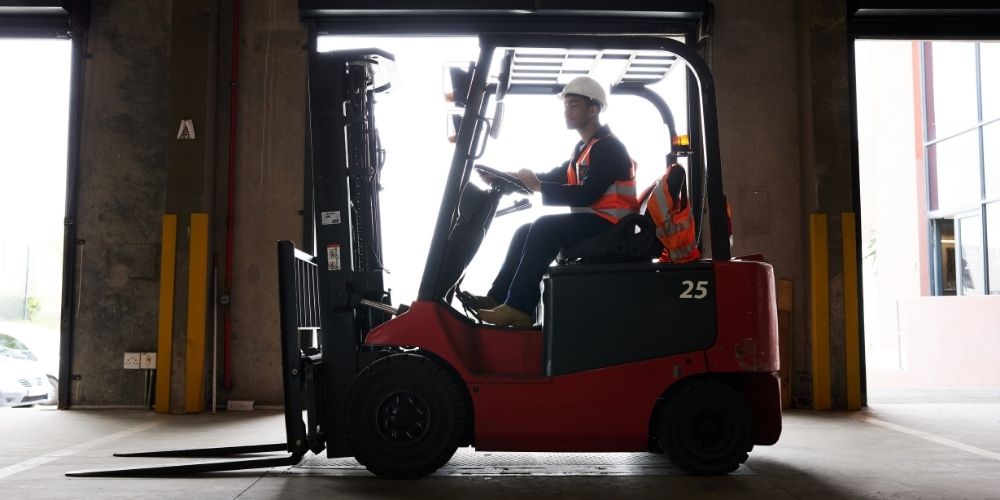Truck driving is a fun and exciting career, as you jump into your truck every day, you’re helping keep America running by moving goods across the country. But no matter where you’re headed, it’s important to drive safely. You may think you’ll never get involved in an accident, but even the best truck drivers can’t prevent an accident when mother nature throws a curve ball or another driver on the road isn’t paying attention. So, it’s important to respond appropriately too if you do end up in an accident, for your safety and the safety of others. So, try following these helpful tips for preventing, and responding to, accidents on the road:
How to prevent an accident when you’re on the road
Stay focused and keep your hands on the wheel
Always remember, you are driving a massive piece of equipment! Keep your eyes on the road and hands on the wheel. Always be aware of everything around you. You need those two hands to make turns in traffic, to signal other drivers and even to brake properly. Do not let distractions get in your way. Never respond to or read text messages while driving, in fact, your phone should not be used in any way while you’re behind the wheel. It’s even been proven that texting and driving can be more dangerous than drinking and driving!
Get plenty of sleep before your shift
Don’t drive sleepy. Drowsiness is one of the most common causes of accidents in commercial trucking. In fact, according to a study conducted by the National Highway Traffic Safety Administration (NHTSA), drowsy driving was found to be a factor in 1 out of every 4 fatal truck accidents. They estimate that drowsy driving leads approximately to 71,000 crashes per year and 328 deaths. The risk of falling asleep at the wheel increases with fatigue and long hours behind the wheel. According to the Federal Motor Carrier Safety Administration (FMCSA), drivers who work more than 70 hours per week have double the crash risk as those who work fewer than 60 hours per week. Drivers who get less than 5 hours of sleep are three times more likely to be involved in a fatigue-related crash than those who get 7-8 hours of sleep.
Drivers should try to avoid being too sleepy for their shift by getting plenty of sleep before they head out on their drive. In addition to the dangers of falling asleep behind the wheel, drowsiness has serious effects on a driver’s attention, judgment and decision-making which can lead to slower reaction times.
Maintain a safe following distance
Remember, it takes much longer to stop an 80,000 pound truck than it does a car — that’s just simple physics. In order to prevent an accident make sure that you always leave enough room between you and the vehicle ahead of you so that if something happens, like a sudden stop or unexpected lane change, you won’t be forced into an accident because there’s not enough room for both vehicles to brake safely without hitting each other. Keep track of your surroundings and always drive defensively.
A good rule of thumb for how much space you should keep in front of you is at least 1 second for each 10 feet of vehicle length at speeds below 40 mph. At speeds greater than 40 mph, you must add 1 second for safety. For example, if you are driving a 40-foot vehicle, you should leave 4 seconds between you and the vehicle ahead. In a 60-foot rig, you will need 6 seconds. Over 40 mph, you would need 5 seconds for a 40-foot vehicle and 7 seconds for a 60-foot vehicle.
What to do if you end up in an accident while on the road
Even if you’re the most cautious driver and follow every rule of the road — accidents can’t always be avoided. Whether it’s caused by another distracted or erratic driver on the road or just really bad weather conditions, accidents happen. Here’s what truckers should do if they ever end up in an accident while out on the road.
Don’t ever leave the scene of an accident
The first thing you should never do is leave the scene of an accident. Even if it seems as though no one else is around to see what happened, it’s still illegal and could lead to serious consequences if caught by law enforcement. If possible, call 911 immediately after an accident occurs and wait for emergency responders to arrive.
Stay calm and cooperate with authorities
After contacting 911 and waiting for emergency personnel to arrive, stay calm and cooperate with law enforcement officers who investigate your crash. Remain cooperative throughout any investigation process so that police can accurately determine fault in a crash and take appropriate action against those responsible for causing it.
Lastly, keep yourself safe, too. Always buckle up.
The National Safety Council reports that seatbelts save 13,000 lives every year. That’s why it’s so important to buckle up every time you climb into your truck. Seatbelts are an essential safety feature for truck drivers, and they’re required by law according to the Federal Motor Carrier Safety Regulations (FMCSR).
There are many things a truck driver can do to avoid accidents
If you’re a truck driver, it can be easy to get caught up in the hustle and bustle of big-rig life and forget about your surroundings or the importance of safe driving practices. But ultimately, to prevent an accident you should stay focused and alert as that’s the key to preventing accidents—and if you do end up in an accident, you must stay calm and avoid doing anything that could jeopardize your situation further. In short, there are numerous things truckers can do to stay safe while on the road; just follow these tips so every driver can safely reach their destinations.





